Accepted Scientific Name: х Mangave cv. Macho Mocha hort. ex D.Klein
Kakteen Sukk. 61(8): 212-214, ills., 2010
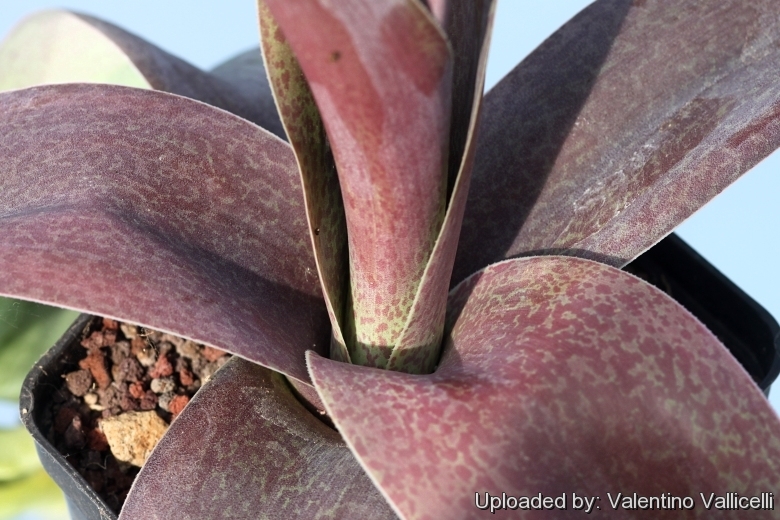
Manfreda cv. Macho Mocha (х Mangave cv. Macho Mocha) Photo by: Valentino Vallicelli
Origin and Habitat: Garden origin.
Synonyms:
Description: This gorgeous plant is an intergeneric hybrid (nothogenus) between Manfreda variegata and (possibly) Agave celsii (syn.: Agave mitis) with the best traits of both parents, but some believe it may be a tetraploid mutation of Manfreda variegata (or even an hybrid beetween Manfreda jaliscana and Agave celsiiSN|301]]). The plant seems originated from seeds collected by Mr. Carl Schoenfeld from a plant of Manfreda variegata grown in Mexico that it had probably crossed in the wild with a nearby plant of Agave celsiiSN|301]].
Rosette: Open, stemless similar in shape to an agave up to 60-90 cm wide
Leaves: Succulent, thick, rubbery (softer than an agave with bristles that are not sharp), 30-45 cm long by 7-10 cm wide, glaucous-grey-green washed in lavender in sun, densely covered with small iron-purple to coffee-colored spots that are crowded toward the tip of the leaves where the entire surface is a brown-purple colour. The contrast of colours is most prominent when plants are grown outside exposed to the sun and intensifies in cold weather or drought stress .
Inflorescence: Up to 2(-3) m tall rising from the middle of the plant much in the manner of an Agave, thick, reddish, with few-flowered heads
Flowers: Light green to creamy-white with exserted purple stamens not resembling an agave's flower that originate from white bloom buds.
Blooming season: Late spring. It doesn't die after bloom like agaves do, the rosette remains solitary until flowering at which time several new plants will emerge from below the older rosette.
Remarks: In the recent Joachim Thiede combined Polianthes (Tuberose) and Manfreda into Agave, thus making the “Mangave” actually an interspespecific Agave hybrid
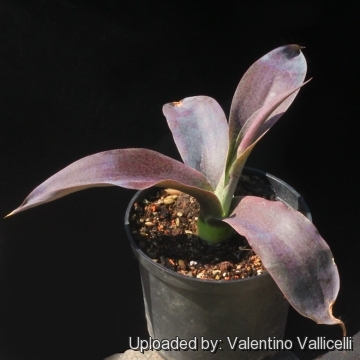 Manfreda cv. Macho Mocha (х Mangave cv. Macho Mocha) Photo by: Valentino Vallicelli
Manfreda cv. Macho Mocha (х Mangave cv. Macho Mocha) Photo by: Valentino Vallicelli Manfreda cv. Macho Mocha (х Mangave cv. Macho Mocha) Photo by: Valentino Vallicelli
Manfreda cv. Macho Mocha (х Mangave cv. Macho Mocha) Photo by: Valentino Vallicelli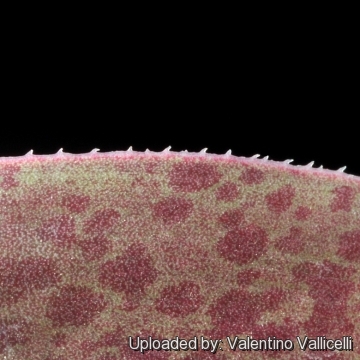 Manfreda cv. Macho Mocha (х Mangave cv. Macho Mocha) Photo by: Valentino Vallicelli
Manfreda cv. Macho Mocha (х Mangave cv. Macho Mocha) Photo by: Valentino Vallicelli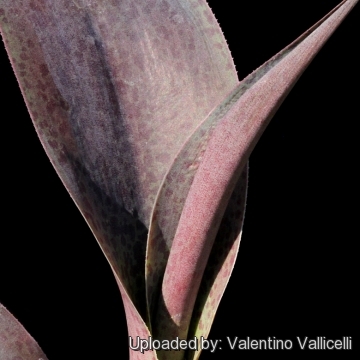 Manfreda cv. Macho Mocha (х Mangave cv. Macho Mocha) Photo by: Valentino Vallicelli
Manfreda cv. Macho Mocha (х Mangave cv. Macho Mocha) Photo by: Valentino Vallicelli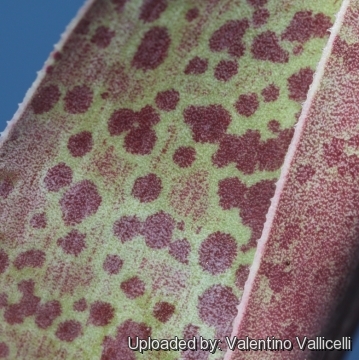 Manfreda cv. Macho Mocha (х Mangave cv. Macho Mocha) Photo by: Valentino Vallicelli
Manfreda cv. Macho Mocha (х Mangave cv. Macho Mocha) Photo by: Valentino Vallicelli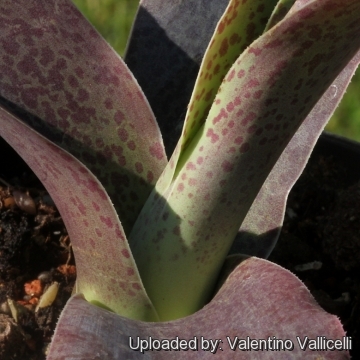 Manfreda cv. Macho Mocha (х Mangave cv. Macho Mocha) Photo by: Valentino Vallicelli
Manfreda cv. Macho Mocha (х Mangave cv. Macho Mocha) Photo by: Valentino VallicelliCultivation and Propagation: It is a relatively easy-to-grow plant. Seems pretty wimpy in hot, blazing sun, but does great in partial sun to shade. It is relatively cold sensitive for an Agave, Just a light freeze (-2° C) for an extended period can burn some leaves (but can survive to at least – 6°, particularly when dry, even though portion of a mature plant can ‘melt’)... but it's too beautiful to risk not covering it on cold nights.
Need a very well-drained, soil. It grows fairly fast in summer if provided with copious water but allows to dry thoroughly before watering again (the more water and fertilizer this plant gets the faster it will grow). During the winter months, one should only water enough to keep the leaves from shrivelling.
It does great in containers or in the ground. Plants cultivated outdoors are more drought tolerant and can take some heat and full sun. Winter storms and rain can damage the outdoor plants (A physiological condition called edema or oedema).
Be aware that slugs seem to love this plant and can severely damage it. Will grow well with quite a bit of shade, bull sun will give the best colour.
Propagation: Most of the plant in cultivation are clones obtained from micropropagation, as this cultivar rarely suckers. If suckers will be available remove them in spring or summer and let the cuttings dry for a few days before inserting in compost.
















